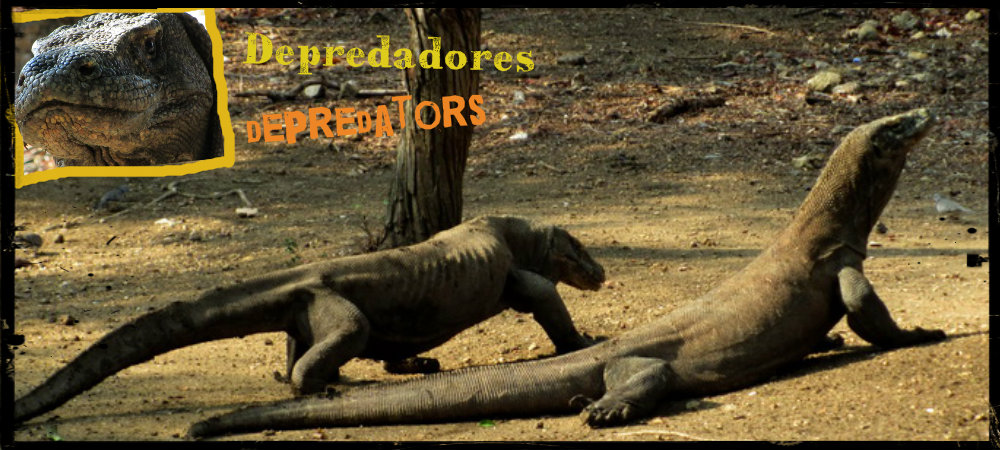-
Predators
Komodo dragons, scavengers and predators, have an eye and an ear poorly developed, however these vital gaps for subsistence is resolved by far the highest degree of development of their sense of smell that allow them to detect the presence of other animals 3 miles away. Whenever a dragon shows her long tongue mouth it gets soaked with air particles leading to the palate where the body Jacobson’s with air which analyzes and identifies potential prey is. Its easy to detect the blood of their prey has given more than a scare some tourists who have come to the islands during menstruation.

It is estimated that the population of existing lizards is currently about 5700 copies, 2900 are in Komodo, Rinca and 100 in 1900 on the island of Motong, the rest are distributed along the west coast of the island of Flores seriously threatened by the relentless habitat destruction. On the island of Padar, who incidentally was the first to be declared a protected area, the species became extinct in 1975.
Of the 9 cases of deaths from the attack of the dragons documented only one has been carried out by a native islander.
The most famous case of ingestion by humans lizards was Baron Rudolf van Biberegg Swiss tourist in July 1972 left the group he was traveling with for photographs; a few days later found his camera and glasses next to a large patch of dried blood and footprints in the ground and the claws of dragons, unmistakable signs of the banquet.
In the villages of Rinca and Komodo have sometimes come to dig graves with human corpses is because its slow movements and serene are misleading, when faced with an empty stomach and so lightweight, in a swift reaction may reach race 20 kilometers per hour, enough to catch during an oversight a man with a swipe of their claws speed. Like most reptiles, your stomach has the capacity to expand remarkably like his jaw, allowing it to swallow in one sitting until 70% of the weight of the dragon, after which it was clumsily removed to a discreet place immobile digesting food for several weeks and stuffing themselves from the hot sun.
The largest specimens reach only eat 12 times a year.
The voracity of the adults, which can be up to 50 years, leading them to attack individuals of the same species; pups impregnated with the smell of excrement to camouflage seek refuge in the higher layers of the trees where his size adults can not.
In its viscous saliva are up to fifty different bacteria, seven of them highly toxic. The remains of rotting carrion as part of your diet contribute to the formation and growth of the bacteria that help them hunt. When someone stalk their prey during hunting and manage to bite, the bacteria in his saliva infected wounds, a few days it dies to become food for the dragons with his sensitive nose are quick to locate. 2009 Dutch scientists discovered that also have a poisonous bite.
Their bite if not deadly at the time, injects its prey various substances including anticoagulants and others that cause a drop in blood pressure, hypothermia and loss of consciousness
A few years ago the park rangers feed the dragons sacrificing a goat offering it to the animals at the sight of tourists. Following closely monitor this system of artificial feeding was concluded that dragons whose male population three times that of females, had begun to atrophy his qualities as hunters. Since Udayana University in Bali recommended ending the practice. Some dragons accustomed to your diet attacked National Park Rangers during their patrols claiming their food.
The female Komodo dragons have the ability to reproduce in the absence of males ity (parthenogenesis) which undoubtedly helped them to survive in hot, dry environment in the dry season.
One of the biggest problems that the park rangers face is controlling poachers who enter the islands in search of deer and wild buffaloes and the consequent reduction of natural prey of dragons.
